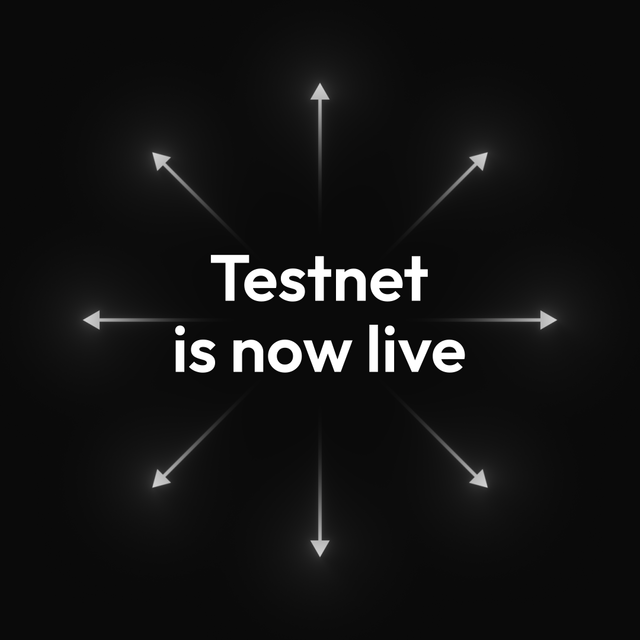Comparing the decentralization of Cardano and Ethereum
Cardano has had PoS for two years now and its decentralization is slowly growing. Ethereum switched to PoS on September 15, 2022. The goal was to reduce the energy burden on the planet and increase decentralization. The latter has...

Cardano has had PoS for two years now and its decentralization is slowly growing. Ethereum switched to PoS on September 15, 2022. The goal was to reduce the energy burden on the planet and increase decentralization. The latter has unfortunately failed. The decentralization has declined substantially after Ethereum's transition to PoS. Cardano and Ethereum differ fundamentally in the quality of decentralization. How is this possible when both networks use PoS? The devil is in the details. While the design of PoS has been thought out to the last detail in the case of Cardano, in the case of Ethereum it gives a half-baked and unfinished impression. Let's briefly reflect on the fundamental differences in PoS designs and look at the statistics on decentralization.
TLDR
- Cardano has non-custodial staking. Ethereum forces users to give up ETH or signature keys.
- Cardano has only one entity that has more than a 10% share in the network (Binance has an 11% share). Ethereum has more such entities and the largest has a 30% share.
- Cardano's MAV is 24. Ethereum's MAV is 3.
- There is a fundamental difference between ADA and stETH in terms of decentralization.
Key concepts of the Cardano PoS network
If ADA holders don't want to become block producers, they can delegate any amount of ADA coins to a chosen pool. There is no defined lower limit for delegation. A refundable fee of 2 ADA and the standard transaction fee is required to register for stacking. The upper limit is the size of the pool. If a pool is saturated, i.e. exceeds a certain size, it is not economically viable to delegate coins to such a pool.
Pools produce blocks in the Cardano network. Pool registration requires a refundable fee of 500 ADA. It is economically and reputationally advantageous for the pool operator to have some pledge (stake of the pool owner). There is no minimum for the pledge, however, it is difficult to attract delegates unless the pledge is at least several tens of thousands of ADA coins in size. Pools with a pledge of at least 50,000 ADA coins usually produce blocks, so we can consider this the minimum required by the delegate community. At the time of writing, the direct cost of setting up a block producer node in the Cardano network is roughly $21,000.
Crucially, anyone can participate in staking without having to entrust coins to a third party. This is true even for those who hold very small amounts of ADA coins. Cardano does not lock ADA coins and holders can spend them or delegate them to another pool at any time. Cardano doesn't need to lock coins because it doesn't punish anyone for bad behavior.
The incentive model of pool operators and delegates is based on Nash equilibrium. The base idea is that when participants are properly incentivized then a Nash equilibrium will be reached based on their rational and honest behavior. The goal of the incentive mechanism is to flourish a high level of decentralization and security. The outcome of each decision-maker depends on the decisions of the others. However, each decision is made upon a limited set of information. Pool operators don't know each other and don't even know all their delegates. They cannot, therefore, anticipate the behavior of others. What they can assume is rational behavior, i.e. the desire to obtain a reward. Cardano uses a reward-sharing scheme that promotes the fair distribution of rewards in the environment with a large number of stakeholders with different roles.
Liquid staking without a defined minimum for joining and the desire to get the reward without the risk of punishment has a very positive effect on the decentralization of Cardano. People delegate out of their own wallets and make little use of staking on exchanges.
Key concepts of the Ethereum PoS network
The basic building block of the Ethereum network is the validator, which requires locking of 32 ETH to activate. In the Ethereum network, each validator is required to have the same vote size. Therefore, a specific number of ETH is defined. Additionally, it is desirable not to have too many validators, as a large number would result in an excessive amount of communication in the network during making the consensus.
Note that there is no concept of protocol-level delegation in the Ethereum network. If someone has less than 32 ETH ($43,000) and wants to participate in staking, they are essentially forced to trust someone else's software and technical skills. It is necessary to entrust coins or signing keys to a third party that poses a counter-party risk.
Slashing can have a positive effect on security. Ethereum can actively defend against attacks and misbehavior. It essentially forces nodes to behave exactly as defined by the rules. However, the team has failed in my view in terms of finding the right balance between security and decentralization.
The Ethereum protocol punishes nodes for bad behavior (slashing) and for inactivity (minor penalty). All stakers essentially risk losing 100% of their ETH. This is very annoying, as it may discourage some users from staking. Avoiding staking for fear of losing coins is counterproductive. Worse, at the time of writing, ETH cannot be unstaked. The team has not delivered unstaking functionality at all. It is not possible to withdraw ETH until the validator has exited. The validator can stop staking, but once it has exited, there's no way to activate the stake again and it is not possible to transfer ETH or withdraw the funds until at least the next upgrade of Ethereum (no date was stated). As a result, the funds remain inaccessible and unstakeable.
It could be assumed by the team that people with less than 32 ETH would want to participate in staking because they have a natural desire to increase their wealth. To launch PoS in such a way that people have to entrust ETH or block signing keys to a third party is disappointing and has a very negative impact on the decentralization of Ethereum.
When Ethereum used PoW, Ethereum had several dominant pools (similar to Bitcoin), but miners could delegate the hash rate in any amount. Everyone who mined Ethereum on their own hardware participated in the decentralization of the network. The resource of decentralization was more distributed among people. You can't say that now. While ETH is nicely distributed among users, this feature cannot be exploited as elegantly as in the case of Cardano. The problem is the artificial limit of 32 ETH. People who entrust ETH to a third party basically lose any direct control over the resource.
People are faced with the difficult dilemma of whether to avoid staking or risk it at the cost of sacrificing protocol decentralization (and especially the risk of losing their own ETH).
When Ethereum used PoW consensus, miners could delegate the hash rate elsewhere at any time if the pool misbehaved. Cardano has preserved this critically important mechanism. When delegating ADA coins to the Cardano pool, the coins still remain in the wallets of users who can delegate them elsewhere at any time. Users can simply choose a pool in the wallet and delegate with one click. In Ethereum's current PoS implementation, people have to delegate the power to a third party without the ability to make any changes. Honesty is enforced through slashing. Can an attacker let slash ETH entrusted to him? Basically, yes, as long as he is sure of his anonymity. The only defense is basically the legal system. People are forced to stake ETH through a centralized exchange like Coinbase, for example, basically just because the company falls under the US legal system.
It seems risky to me to entrust ETH to a pool that would be operated by an anonymous team. If there is a slash of a larger amount of ETH, there is nothing stopping the team from just disappearing.
We have described only the basic staking concepts for both protocols. Let us now look at how the differences in staking affect the quality of decentralization in practice.
Comparison of decentralization
Cardano stake pool operators have to run two types of nodes. Core nodes (block producers) and relay nodes. Each core node must be accompanied by one or more relay nodes. At the time of writing, there are 3,200 pools registered, of which blocks produce roughly 1,200 of them. Relay nodes are 5,800. There are almost 1.2M delegates. For both Cardano and Ethereum, a single entity can run multiple block producers. To get a good view of the decentralization of Cardano, we need to consider multi-pool operators.
In the figure below, you can see that Binance has the largest stake at 11.1%. Binance operates 62 pools. The second multi-pool operator is Avengers with an 8.8% stake and 44 pools. After that, the size of the large operators drops below 5% to one. In third place is Wave with a stake of 3.3% and 16 pools. As you can see, there are several dozen entities in the Cardano network that operate several pools. An important group is the single pool operators. Their stake is 23% in total.

The current Minimum Attack Vector (MAV) of Cardano is 24.
The Ethereum network is made up of 8,340 clients running roughly 440,000 active validators. The validator requires locking 32 ETH (not the client). It is commonly recommended that no more than 1,000 validators run on a single client. However, there is no fixed limit.
Similar to the Cardano network, this data does not tell us much about the real decentralization of the network, as one entity can run multiple clients with validators. We need to be concerned about who makes up the depositor groups.
The two biggest groups (over 73%) are taking pools (40,5%) and exchanges (33,1%). The “Others” group has a 16.3% share, whales 10.1%. Let's take a look at a more detailed pie chart.

Lido has a 30% stake. Lido is an Ethereum staking-as-a-service company aiming to go fully decentralized. The project has implemented a skeleton upgradable smart contract for making new withdrawals and new deposits fully non-custodial. As far as I know, the project is still seeking an optimal solution to become a trustless node operator. Lido has the largest share of staking in the Ethereum network and a 30% share represents a strong single point of failure.
People also like to stake ETH through well-known centralized exchanges like Coinbase (14.7%), Kraken (8.2%), Binance (6.6%), etc. Note that only these three well-known exchanges together account for almost 30% of staked ETH. MAV of Ethereum is 3, the same which has Bitcoin.
Let's compare the two networks. In the Cardano ecosystem, Binance has a strong position with 11.1%. Other centralized exchanges do not have such a strong presence. The eToto exchange has only a 2.2% share. In the Cardano ecosystem, only one entity has more than 10% share and only 2 entities have more than 5% share.
In the Ethereum network, 3 large exchanges have a 30% share. Lido, as the only entity, has a 30% share.
In the Cardano network, the single pool operators together have a 23% share while in the case of Ethereum it is only 16.2%. If we were to compare MAV, it is 24 for Cardano and 3 for Ethereum.
If an attacker wanted to get a huge number of coins to attack (say more than 50%), in the case of Cardano he would have to attack thousands of ADA holders or Binance. In the case of Ethereum, he can try to attack Lido or 3 centralized exchanges.
I think these figures need no further comment.
Conclusion
Comparing the decentralization of blockchain networks is actually very complex and often depends on the details. 440,000 validators may seem like a huge number, but if someone has, say, 1000 ETH, they have no choice but to run over 30 validators. The truth is often hidden in the details and the numbers can be very misleading.
Blockchain networks can't do without delegating power and it doesn't matter if it's coins or hash rates. While delegation is not directly supported by Ethereum, this capability arose organically. It is important to look at the details. From my perspective, if you get a stETH for an ETH, you are giving up a resource that serves the Ethereum network to create new blocks. stETH clearly doesn't have that ability.
In my opinion, staking on Cardano is the best we have at the moment and it defines the current standard. ADA holders can support their chosen pool via certificate submission, but they don't give up control of the coins. Delegates can sell coins at any time or delegate coins to another pool if there are problems. Thus, ADA holders do not have to relinquish control over decentralization. There is a fundamental difference between ADA and stETH.
The dependence of pools on delegates is important because pool operators can never be sure of their position. This forces them to behave honestly. It can be said that in the Cardano network, decentralization enforces security to some extent. For Ethereum, slashing plays a significant role. My perception is that security is more important to the Ethereum team than decentralization.
Cardano's MAV is 24, which on the one hand is currently above standard, but on the other hand, the number is still low. If we are truly concerned about decentralization, we must aim for a significantly better result as adoption grows.
Delegate Your Voting Power to FEED DRep in Cardano Governance.
DRep ID: drep12ukt4ctzmtf6l5rj76cddgf3dvuy0lfz7uky08jfvgr9ugaapz4 | We are driven to register as a DRep by our deep dedication to the Cardano ecosystem and our aspiration to take an active role in its development, ensuring that its progress stays true to the principles of decentralization, security, and community empowerment.DELEGATE VOTING POWER!







